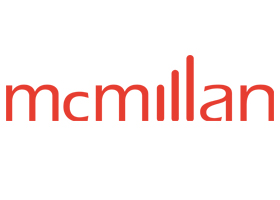


Trademark Law: Change in Practice Regarding Extensions of Time in Examination
Trademark Law: Change in Practice Regarding Extensions of Time in Examination
On January 17, 2020, the Trademarks Branch of the Canadian Intellectual Property Office (“CIPO”) issued a new practice notice with regard to requesting extensions of time to file a response to an examiner’s report (the “Practice Notice”). The Practice Notice, which can be found by clicking here, is expected to have a profound impact on Canadian trademark application prosecution strategies.
Under the previous practice (i.e. in respect of examiner’s reports issued prior to January 17, 2020), CIPO generally permitted applicants to request a six month extension of time to file a response for each examiner’s report issued during the examination stage. That meant that applicants could typically count on having up to one year from the date of an examiner’s report to file a response (i.e. the six months allowed under the examiner’s report, plus the six month extension of time). However, per the Practice Notice, an extension of time to file a response to an examiner’s report issued on or after January 17, 2020 will not be granted unless the applicant demonstrates exceptional circumstances justifying why a proper response cannot be filed by the deadline provided in the examiner’s report. A proper response to an examiner’s report issued during examination is one which addresses all objections, requirements, or requests raised in the examiner’s report. Importantly, the Practice Notice recognizes that an objection which could lead to a refusal under paragraphs 37(1)(b) (registrability), 37(1)(c) (entitlement), or 37(1)(d) (distinctiveness) of the Trademarks Act where the applicant requires more time to consider the objection and file a proper response to be an exceptional circumstance that would justify an extension of time. Additionally, the Practice Notice provides that where an applicant is in the process of compiling evidence sufficient to show that a trademark was distinctive at the filing date of the application, it also constitutes an exceptional circumstance that would justify an extension of time. However, critically, in both of these circumstances (but only in these circumstances), the Practice Notice specifically provides that the applicant may request an extension for that reason only once during the prosecution of the application.
Other examples of possible “exceptional circumstances” provided in the Practice Notice include the following:
- Recent change in trademark agent;
- Circumstances beyond the control of the person concerned (e.g. illness, death, accident);
- Transfer of an application or registered trademark that would overcome a confusion objection raised in the outstanding examiner’s report;
- Opposition proceeding involving a cited co-pending and allegedly confusing trademark;
- Cancellation proceeding involving a cited allegedly confusing registered trademark;
- Negotiating consent with the public authority holder of an official mark;
- Applicant is waiting on the International Bureau for notification that a divisional international registration has been created where a request has been filed for the division, in respect of Canada, of the international registration on which the original Protocol application is based.
If the applicant fails to file, within six months of the response period provided in the examiner’s report, a proper response addressing the examiner’s concerns, or if the reasons provided in a request for an extension of time are not considered by CIPO to justify an extension of time, a notice of default will issue. If the default is not cured within the time specified in the notice (typically two months) the applicant may treat the application as abandoned.
Going forward applicants will have to be mindful of the restricted ability to obtain extensions of time, and adjust practices as necessary. For more information on how this change in practice may affect your pending trademark applications, please contact us.
by Pablo Tseng and Peter Giddens
A Cautionary Note
The foregoing provides only an overview and does not constitute legal advice. Readers are cautioned against making any decisions based on this material alone. Rather, specific legal advice should be obtained.
© McMillan LLP 2020
Insights (5 Posts)View More
More Than Meets the Eye: The Legal Implications of British Columbia’s Agreement to Recognize Aboriginal Title Over Haida Gwaii
An analysis of legal implications related to the BC Government's agreement with the Haida Nation to recognize Aboriginal title over Haida Gwaii.
Lessons Learned from the TTC’s Ransomware Attack
Lessons learned from the recent investigation by the Ontario IPC into the effectiveness of the TTC's cybersecurity measures and ransomware attack response
Don’t Get Caught by Canada’s Patent Novelty Grace-Period
The key difference between Canada and other jurisdictions like the United States when relying on the grace-period for inventor disclosures.
Shifting Gears – Canada to Consider New Motor Vehicle Equipment Regulations to Help Prevent Auto Theft
Transport Canada announces plan to update safety standards to combat auto theft.
Budget 2024: Legislative Changes of Note for Investment Funds
In Budget 2024, the Government acknowledges that the restrictions placed on the property that may be held by registered plans have become unduly complex.
Get updates delivered right to your inbox. You can unsubscribe at any time.






